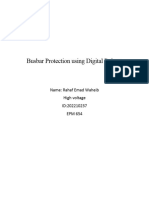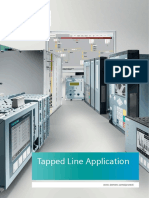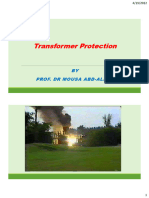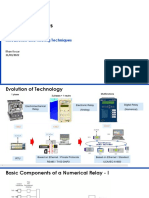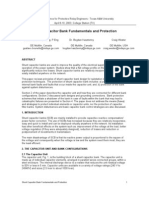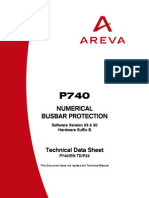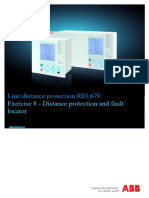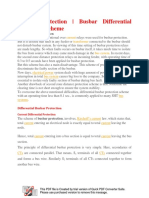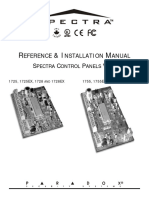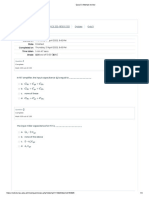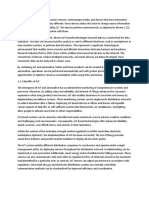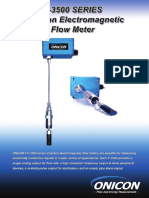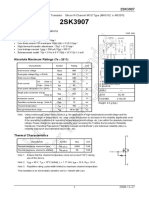0% found this document useful (0 votes)
118 views20 pagesBusBar Protection
The document discusses busbar protection in electrical substations. It describes the principles of busbar protection, which uses Kirchoff's law and differential current measurements to detect faults. Two main types of protection schemes are high-impedance and low-impedance differential protection. Low-impedance schemes have fewer requirements on current transformers and can internally supervise circuit breaker positions. Busbar protection systems can be centralized or distributed, and include main and check zones to provide selective and non-selective protection of the busbar.
Uploaded by
Anandkumar S. FarkaseCopyright
© © All Rights Reserved
We take content rights seriously. If you suspect this is your content, claim it here.
Available Formats
Download as PDF, TXT or read online on Scribd
0% found this document useful (0 votes)
118 views20 pagesBusBar Protection
The document discusses busbar protection in electrical substations. It describes the principles of busbar protection, which uses Kirchoff's law and differential current measurements to detect faults. Two main types of protection schemes are high-impedance and low-impedance differential protection. Low-impedance schemes have fewer requirements on current transformers and can internally supervise circuit breaker positions. Busbar protection systems can be centralized or distributed, and include main and check zones to provide selective and non-selective protection of the busbar.
Uploaded by
Anandkumar S. FarkaseCopyright
© © All Rights Reserved
We take content rights seriously. If you suspect this is your content, claim it here.
Available Formats
Download as PDF, TXT or read online on Scribd
/ 20


